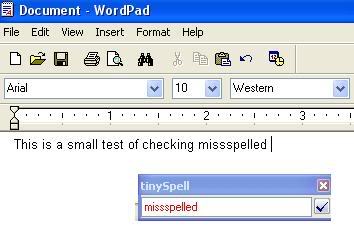

#Stop spell check on simple notepad install#
Provided the requisite language support is available (you'll be prompted to install it if it is not), the correct dictionary will be used to check the text and Word will swap from one to another if the change takes place in the middle of a document. To do this, select the text, choose Tools, Language and select the language to use to proof the text. For example, if you're preparing a document for a customer in the USA you may choose to apply US spelling to the document (to trap words like colour, labour etc.). In a similar way you can mark text to be spell checked using another language. Then you can apply the style anytime you need to exclude text from being checked. If you need to use this option frequently, consider creating a style called NoSpellCheck and save it to your default template. Now, when the document is spell checked this text will be skipped. To flag this text so it isn't checked, select it and choose Tools, Language and enable the Do not correct spelling or grammar checkbox. In some cases you'll want Word to spell check your document but not certain parts of it, for example you won't want to check HTML or computer code. Choose Tools, Options, Spelling & Grammar and disable the Check spelling as you type and Check Grammar as you type checkboxes. If you're annoyed by Word's squiggly red and green lines you can stop them from appearing by disabling automatic spelling (red) and grammar checking (green). If you're using the Spelling and Grammar dialog (press F7 to spell check the document), you can move between the dialog and your document to make edits by pressing Control + Tab and then, when you're done, click Resume in the dialog to continue with the spell checking. When you're done, continue editing your document or press Alt + F7 to move to the next error. The popup menu will give you options to chose from including alternate spellings. When you're typing with Automatic spell checking turned on, you can alter an underlined word by right clicking it. While you may think that spell checking is as simple a process as pressing F7, then you may be interested to know there's more to this tool than first meets the eye. Your spell checker is a handy, although flawed, adjunct to the proofing process, for example it won't pick up a correctly spelled word used incorrectly (eg inn for in).
#Stop spell check on simple notepad how to#
It's not that I don't know how to spell its just that it's all too easy to hit the wrong keys when you're in a hurry and it's difficult to properly proof a document when reading it on the computer screen. If you're anything like me you'd be hard pressed living without your spell checker. Helen Bradley ventures into the bowels of the Microsoft Word Spell Checking tool to answer every query you've ever had about it.

All you ever wanted to know about Spell Checking in Word (but were afraid to ask!).


 0 kommentar(er)
0 kommentar(er)
